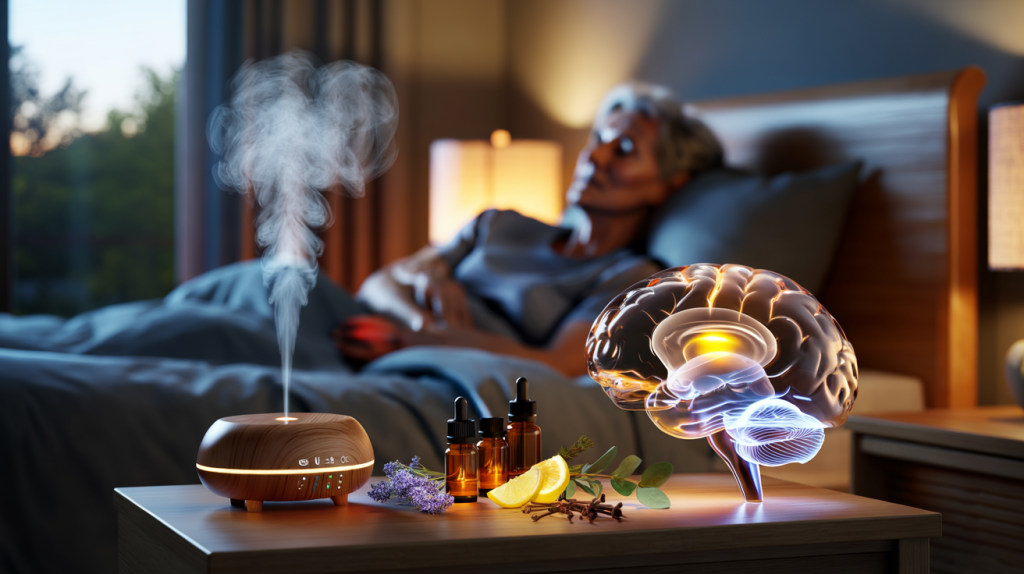Latest study links scent exposure to memory – but what about gray matter
Curious about whether essential oils can shape the brain’s gray matter? A 2023 study from the University of California Irvine reported that older adults exposed to a rotating set of essential oils during sleep showed a 226 percent boost in a memory test compared with a control group, along with stronger integrity in a key brain pathway on MRI. The protocol was simple : two hours of nightly diffusion over six months with one oil per night.
That eye-catching result, published in Frontiers in Neuroscience in July 2023, measured changes in the left uncinate fasciculus – a white matter tract linking memory and emotion regions – and not direct gray matter volume. The finding still fuels a big question many readers ask : can regular scent stimulation through essential oils also influence gray matter itself, the tissue that packs neurons and decision making power.
Essential oils, gray matter and the evidence so far
Here is the core idea many are testing today : olfactory enrichment can be a low-effort, low-cost way to nudge brain plasticity in midlife and older age. The problem it seeks to solve is real. With age, olfactory acuity drops, and reduced smell is associated with faster cognitive decline. Any safe method that engages the olfactory system could, in theory, support brain networks that atrophy with time.
Several MRI studies long before 2023 give clues on gray matter. Research on formal olfactory training – typically using four distinct scents like rose, lemon, eucalyptus and clove – has reported structural brain changes after weeks of twice-daily sniffing. Peer reviewed work in the early 2010s and again in 2018 documented increased gray matter volume or cortical thickness in olfactory related regions after 12 weeks of training, alongside clinically meaningful smell test gains.
The difference matters. The 2023 UCI trial targeted white matter integrity and cognition in adults aged 60 to 85 using nightly diffusion. Olfactory training studies, by contrast, tested deliberate sniffing sessions of concentrated odors for set durations. Both lines of evidence point in the same direction : consistent odor exposure can remodel brain circuits measurable on MRI, with white matter and gray matter markers responding depending on protocol and population.
What to do now without overpromising results
Plenty of readers already use diffusers at home and want practical steps backed by science. Two patterns emerge from published protocols. First, regularity counts. The UCI approach used two hours of diffusion nightly over six months, and the classic training method uses short, mindful sniffing sessions twice a day for 12 weeks. Second, variety helps. Rotating distinct odors exposes the brain to richer sensory input, which seems benefical for plasticity.
Safety deserves space. Essential oils are potent. National health agencies and hospital guidelines advise diluting oils, ventilating rooms, and avoiding direct skin application for children, pregnant people and those with asthma or migraines. Some oils can interact with medications. If any irritation or dizziness appears, stop the exposure and seek medical advice.
A concrete example that aligns with the literature : choose four clearly different scents and spend 20 to 30 seconds on each, twice daily, for at least 12 weeks. Separately, a diffusion routine can follow the UCI pattern – around two hours in the evening while reading or during early sleep – rotating through several oils across the week. Neither routine is a medical treatment. They are sensory workouts informed by published timelines and doses used in studies.
Why gray matter changes are plausible – and what the next trials must show
Logical question : if white matter integrity improved in 2023 with nightly diffusion, why not gray matter too. Olfactory pathways connect directly to limbic and frontal regions where prior MRI studies showed gray matter increases after training. Repeated stimulation strengthens synaptic activity, which can translate into measurable volume or thickness on high resolution scans after weeks to months. That mechanism fits with both older training papers and the newer diffusion study.
There is still a missing piece. Trials need to combine nightly diffusion with high quality gray matter imaging and larger samples, then report region specific changes with exact effect sizes and durability over 6 to 12 months. Pre registration, standardized oils, and blinded cognitive outcomes will help separate genuine neuroplasticity from placebo or mood effects. Until those data arrive, the most precise statement is this : essential oil based olfactory enrichment has randomized evidence for memory benefits with white matter changes in 2023, and independent MRI studies from 2013 and 2018 link regular smell training to increased gray matter in olfactory networks.
